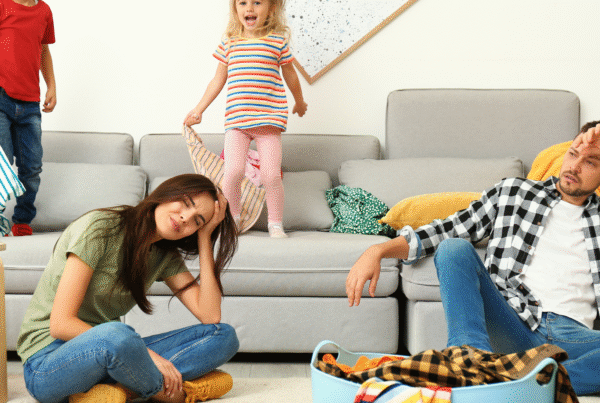We’ve all been there. The toddler is melting down because you gave them the “wrong” spoon, your teen just rolled their eyes for the fifth time in five minutes, or you’re running on fumes after a sleepless night and your patience is wearing thin. In those moments, it’s easy to lose our cool. But here’s the truth: our ability to regulate ourselves is one of the most powerful parenting tools we have.
What Is Self-Regulation?
Self-regulation is our ability to manage our emotions, thoughts, and behaviors in a way that aligns with our values—even when we’re stressed, tired, or frustrated. It’s what helps us pause before reacting, take a deep breath instead of yelling, and respond with intention rather than impulse.
For kids, self-regulation is still a skill in progress—their brains are developing, and they’re learning how to handle big feelings. And guess who their biggest teacher is? That’s right. Us.
Why Our Self-Regulation Matters to Our Kids
-
We Model It Every Day
Our kids are always watching us—more than they’re listening to our words, they’re learning from our actions. When we show them how to pause, calm down, and respond with care, they start to internalize those strategies. You may not see it right away, but they are learning how to handle their emotions by watching how we handle ours. -
It Sets the Emotional Tone at Home
Think of your mood as the emotional thermostat in the house. When we’re regulated, we create a sense of safety and stability. This doesn’t mean we have to be perfect or never get upset—but it does mean we work on coming back to center, even after hard moments. -
It Builds Connection and Trust
When we can respond calmly (especially when our kids are not calm), we show them that we can handle their big feelings without shutting them down or escalating. That builds trust. Our kids learn that home is a safe place for all emotions—not just the easy ones. -
It Teaches Them It’s Okay to Be Human
Regulating ourselves doesn’t mean suppressing feelings. It means not letting those feelings control us. And when we do lose our cool (because we’re human!), we can model how to repair—“I’m sorry I yelled. I was feeling really overwhelmed, and I’m working on handling my frustration better.” That’s powerful. That’s growth.
How Do We Practice Self-Regulation?
-
Check in with yourself. Notice when you’re getting triggered. What’s happening in your body? Is your heart racing? Are your shoulders tense? Awareness is the first step.
-
Pause before reacting. Take a breath. Give yourself space to choose your response.
-
Use calming strategies. Whether it’s grounding techniques, a moment of silence, stepping outside, or saying, “I need a minute,” these small actions make a big difference.
-
Take care of your needs, too. Self-regulation is easier when we’re rested, fed, supported, and not running on empty.
-
Practice self-compassion. You’re not going to get it right 100% of the time—and that’s okay. Parenting is a marathon, not a sprint.
Final Thoughts
Being a parent means guiding, loving, teaching, and showing up again and again even when it’s hard. By working on our own self-regulation, we don’t just help ourselves feel better—we help our children develop the tools they’ll need for a lifetime of emotional well-being. It’s not about being perfect, it’s about being intentional.
And the good news? Every moment is a chance to practice!



